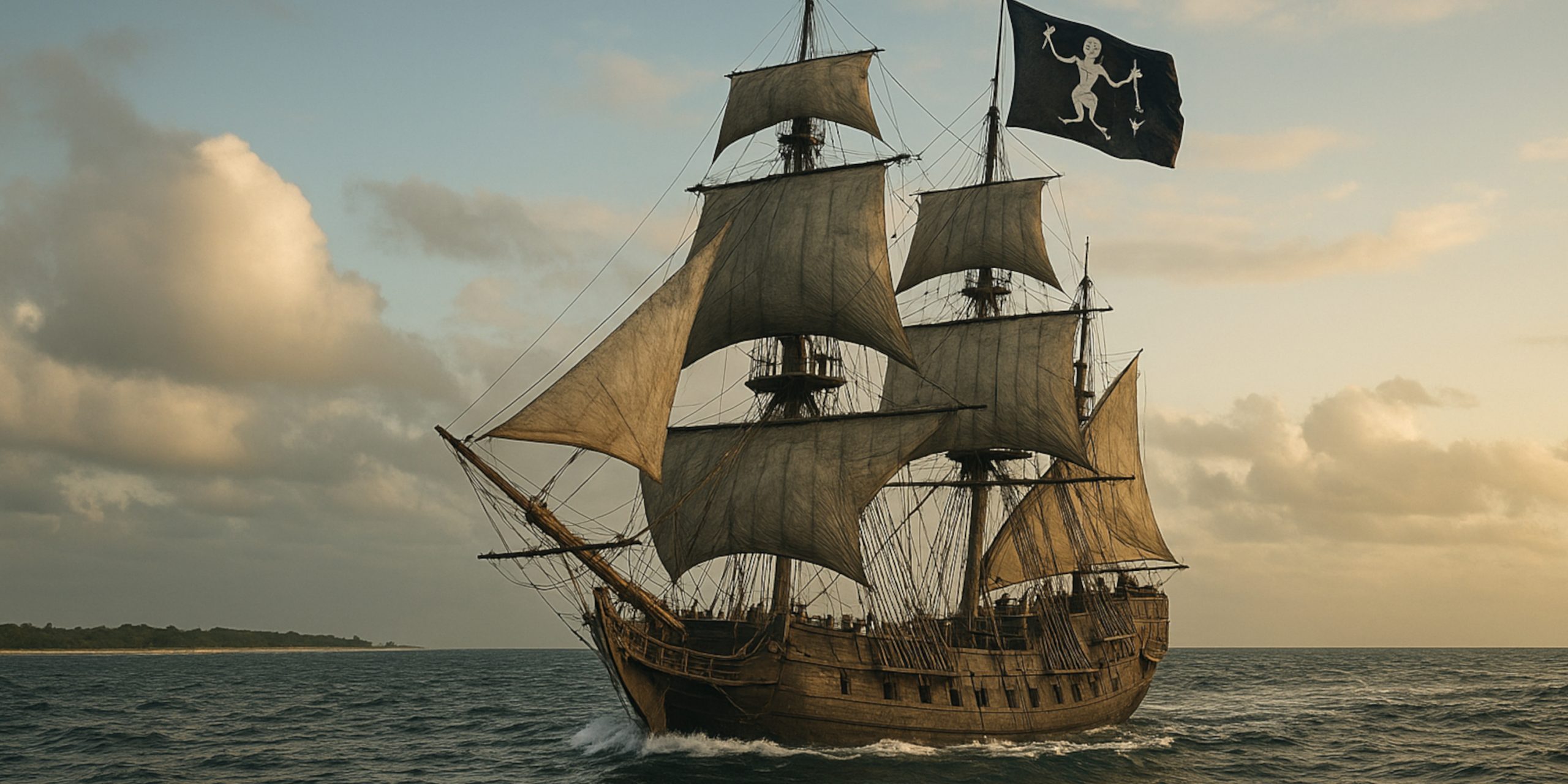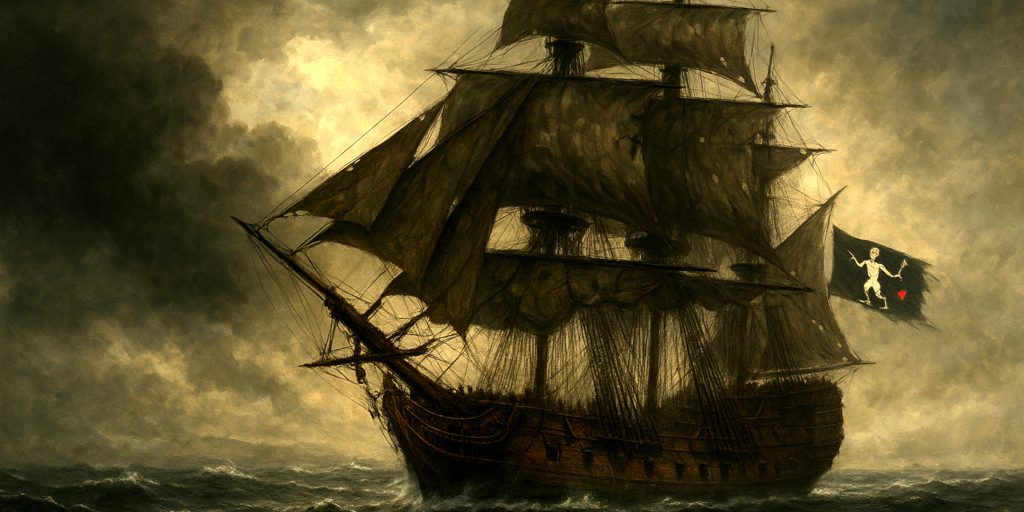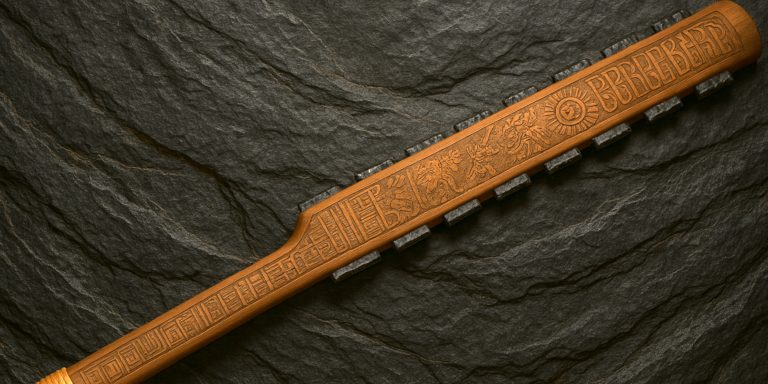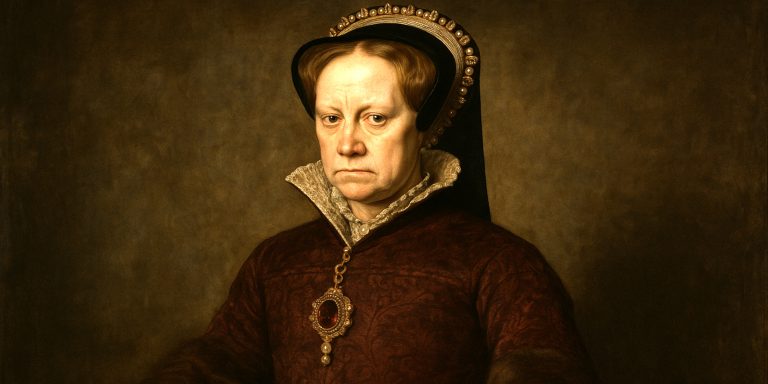
Queen Anne’s Revenge was for a time a vehicle of terror on the high seas. She was infamous, feared, and surprisingly short-lived. Commanded by the notorious Edward Teach, better known as Blackbeard, this vessel became a floating symbol of chaos, ambition, and swagger during the Golden Age of Piracy. Her story, though brief, is soaked in gunpowder, rum, and a fair bit of theatrical flair.
Origins of the Ship
Before she terrorised the Caribbean, Queen Anne’s Revenge began life under a far more respectable banner. Originally a French slave ship called La Concorde, she was captured by Blackbeard and his crew off the island of Martinique in late 1717. Blackbeard saw potential in her size and firepower, and promptly re-fitted her for battle.
Renamed Queen Anne’s Revenge, a title dripping with irony and rebellion, she may have been a nod to the recently deceased Queen Anne and the discontent that followed her reign. Some historians see it as a subtle protest against the Hanoverian succession; others think Blackbeard just liked how it sounded.
Specifications
| Feature | Details |
|---|---|
| Type | Modified French slave ship |
| Tonnage | Approximately 200–300 tons |
| Guns | Around 40 (though reports vary) |
| Crew | Estimated 250–300 men |
| Length | Around 100 feet |
| Armament | Dozens of cannon, swivel guns, small arms |
| Flag | Blackbeard’s own design – a horned skeleton spearing a heart while raising a toast to the Devil |
She was not built for comfort, but for dominance. When fully manned and armed, Queen Anne’s Revenge was one of the most formidable pirate ships ever to patrol the Atlantic.
The Reign of Blackbeard

From late 1717 to mid-1718, Blackbeard ruled the seas with his floating fortress. The ship struck fear into merchants and naval officers alike. With his thick beard tied in ribbons and slow-burning fuses woven into his hair, Blackbeard played the part of maritime bogeyman to perfection.
He used Queen Anne’s Revenge to blockade Charleston, South Carolina, in May 1718, holding the entire port hostage until he received a chest of medicine. The stunt worked, and the audacity of it made him a legend.
The Downfall
Like many stars of their time, Queen Anne’s Revenge met a dramatic end. Only a month after the Charleston blockade, she ran aground near Beaufort Inlet, North Carolina. Whether it was an accident or a calculated move to downsize his increasingly restless crew remains debated.
Some say Blackbeard intentionally stranded the ship to rid himself of unwanted pirates before negotiating a royal pardon. Others insist it was pure misfortune. Either way, the mighty Queen Anne’s Revenge was left to rot in the shallow sands.
Discovery and Archaeology
For over two centuries, the wreck lay hidden beneath the sea until its discovery in 1996 by Intersal Inc. off the coast of North Carolina. Archaeologists confirmed the identity through artefacts matching the period and the sheer firepower found aboard.
Excavations have revealed:
- Cannon barrels (many still loaded)
- Navigational instruments
- Medical tools (possibly plundered from Charleston)
- Gold dust and lead shot
- Fragments of weaponry, including swords and flintlocks
Much of the recovered material now rests at the North Carolina Maritime Museum in Beaufort, where Queen Anne’s Revenge continues to attract curious visitors and maritime historians alike.
Legacy
Queen Anne’s Revenge represents the height of piracy’s theatrical age. She embodies the paradox of Blackbeard himself, both ruthless criminal and charismatic folk hero.
Her rediscovery has reignited fascination with piracy, not as a Disney fantasy, but as a brutal, opportunistic, and occasionally ingenious profession. Every rusted cannon and splintered plank tells a story of defiance and daring on the edges of empire.
Even in ruin, she has achieved a kind of immortality. Few ships, royal or rogue, have left such a lasting wake in history.
Closing Thoughts
Queen Anne’s Revenge was not the longest-serving ship, nor the most successful in naval terms. But she captured the imagination of generations. Perhaps that was Blackbeard’s greatest coup, not the gold he stole, but the legend he created.
After all, what’s a pirate without a proper stage?
Watch the documentary:



